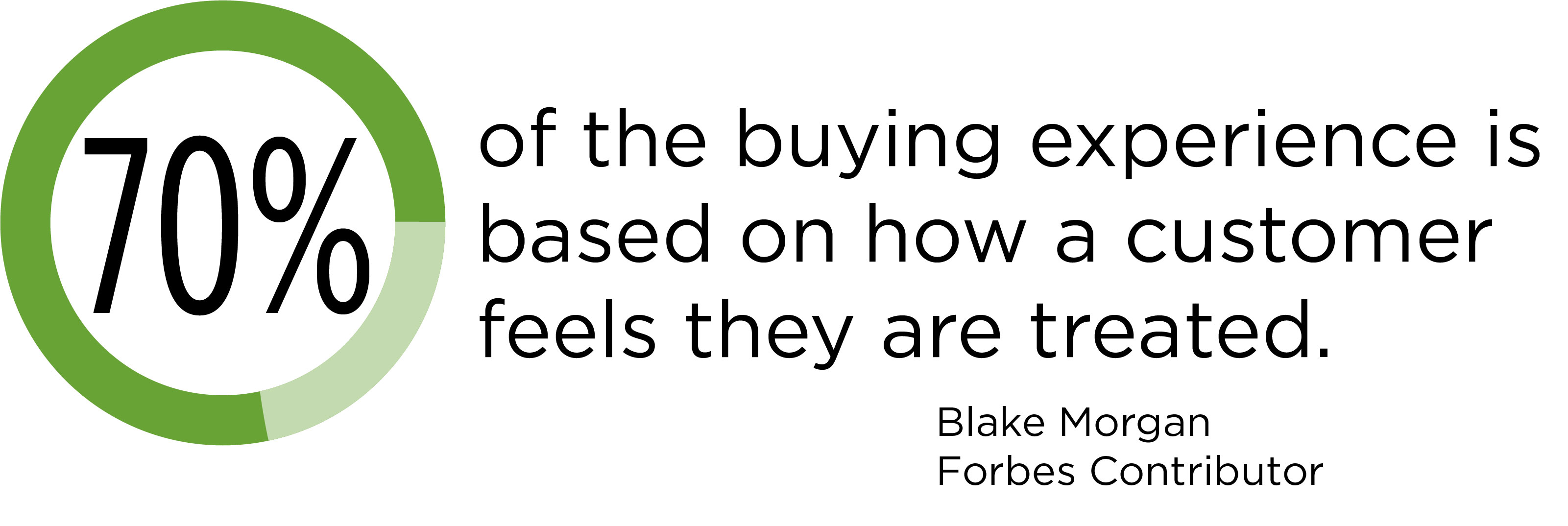The 2019 Adobe Digital Trends report was released earlier this month - have you had a chance to read it? According to their data, 86% of buyers are willing to pay more for great customer experience - but that experience looks different for different companies. Digital Trends also reports that the more expensive a product is, the more likely a person is to pay more for “great customer service”. With increasingly high expectations from customers, companies must keep up. Are you hoping to put a greater focus on customer experience (CX) in 2020? Here are 7 great strategies to push you ahead of the competition and on your way to stellar CX:
1. Research your customers’ behaviour and create personas
How will you know what your customers want if you don’t know who they are? Develop a clear picture of who your customer is: include demographics, of course, but also be sure to understand how they interact with your website, how they use your service, and when they buy your product. You may find that there are differences between your perceived and actual customer personas.
Do your customers discover your website on a phone and then revisit on a computer? Check that your site is easy to use on a mobile device. Do a large percentage of customers convert after viewing a specific page? Place that page in front of as many customers as possible. These behaviours can lead you to conclusions about both positive and negative aspects of the customer journey but remember that the best way to find out what your customers are thinking is to ask them! Think of the persona as a hypothesis, which you can then test against feedback analysis.
2. Hone your touch points
In the ever-evolving world of technology, no website, app, or online presence will ever be perfect. Businesses are in a cycle of constant improvement. Much like the customer experience journey you’re trying to map, it helps to look at your online presence as a journey as well. Listen to feedback and stay on the pulse point of customer behaviour, then use that information as a way to constantly improve your interactions with your customers.
Each one of those interactions, or touch points, is creating a picture of your business from your customer’s perspective. Make sure each one makes a good impression! How do you draw potential customers in? Do you collect email addresses? Avoid spamming your contact list, and segment your audience to provide meaningful, relevant content. Do you have an abandoned cart process, or a consistent way of asking your customers for feedback? Using our marketing automation tool will help you create a consistent customer journey with everything from email and SMS to loyalty programmes your customers will love.
3. Build a customer centric employee culture
It’s easy to overlook but surrounding yourself with people who care deeply about your customers is the best way to ensure customer success. According to this Forbes article, 70% of the buying experience is based on how a customer feels they are treated. The purchasing process - regardless of the product - is highly personal, and having advocates for the customer within your organisation will ensure a customer-first focus.
 4. Start a loyalty programme: stay engaged and in touch
4. Start a loyalty programme: stay engaged and in touch
What happens after a customer purchases your product or service? If someone drives off your lot in a brand new car they love, don’t just let them leave! Your happy customer might have a coffee group friend who’s in the market for a new set of wheels. Prompt a recommendation by offering an incentive. Keep in touch with offers relevant to your customer’s purchase: if the SUV they purchased has a roof rack upgrade available, be sure to let them know - but don’t recommend roof racks to the segment of your customers who purchased convertibles.
Another great way to ensure that your customers return is to offer a points-based loyalty programme for purchases. Offering a $10 voucher for every $100 spent will put a smile on anyone’s face, and for most businesses this is much lower than the cost to acquire a new customer. Our Advocacy and Loyalty program is a great way to ensure you stay engaged with your customers.
5. Collect feedback at multiple points in the customer journey
Picture this: You’re the customer experience manager for a chain of clothing stores. Your stores are full of five star reviews on google, and your NPS is near-perfect. It sounds like a dream, right? Here’s the catch: A customer is added to your loyalty programme when they make their first purchase, but the loyalty programme doesn’t ask them to provide feedback until they’ve made their third purchase, at which point they also get a $100 store voucher. If a customer has made three purchases already and has just been presented with $100 to spend as they wish, they’re unlikely to feel particularly negative about anything - but that doesn’t give you any information about customers who might not make it to this point!
Collecting feedback at as many stages as possible is integral to gaining a holistic view of the customer journey. If you can’t ask customers during the process (often impractical - imagine following someone around while they’re shopping in your store, asking them how they’re feeling about the selection!) - ask specific but open-ended questions about the shopping journey as soon as possible. Try something like “describe your first shopping experience in your local store”. Avoid yes/no and leading, overly specific questions.
6. Don’t underestimate the importance of emotion
The buying experience is an emotional one, and the more expensive the product, the more your customers are willing to pay extra for great customer service according to research by PWC. Your customers are greater than the sum of their NPS - they are humans, and they are emotionally attached to their money. If you play your cards right, they might also become emotionally attached to your product. There are so many ways to personalise customer experience: something as small as adding a first name to the salutation of an email (along with making sure that emails are segmented to provide relevant content to different customers) or leaving a welcome basket in a hotel room. Treat your potential customers like real people, not prospects - and when you think about ways to offer small tokens of appreciation to your customers, favour those with a personal touch.
7. Adopt an agile approach to feedback analysis
Customer experience is a fast-moving beast. Traditionally structured businesses - especially larger organisations - are at risk of falling behind in customer feedback analysis. Analysing upwards of 50,000 rows of customer comments, CMS data, or feedback results each month isn’t a small task! One approach is to manually analyse a small percentage of available data, but larger organisations run the risk of missing potentially critical information by ignoring the majority of their feedback.
The only way to get holistic results with a customer first focus is to leverage AI tools to assist in data processing: It’s no longer possible for traditional analysis to be carried out in a way that captures the granular levels of data required on the scale required to make meaningful improvements. The good news is, there’s an AI tool to help. Try our AI Customer Analytics Tool that picks up where traditional keyword analysis tools fail. By analysing all of your customer data, not just a segment, you’ll be able to make data driven business decisions with customer experience at the heart of the conversation.
Contact us to out how Touchpoint's complete suite of CX tools can help launch your business to the next level.

 4. Start a loyalty programme: stay engaged and in touch
4. Start a loyalty programme: stay engaged and in touch